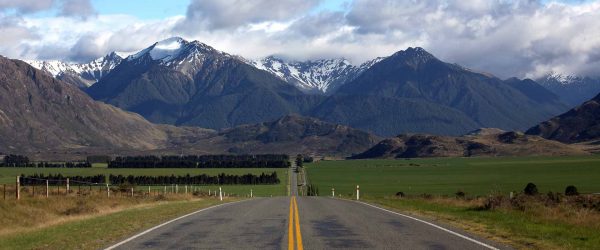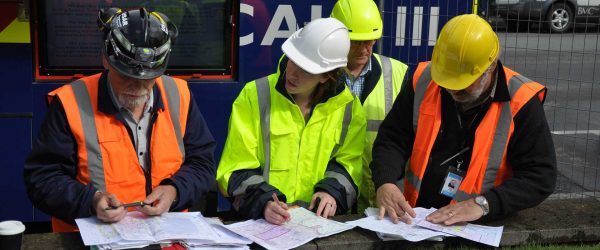Project Summary
This project used quantitative indicators to develop the New Zealand Resilience Index (NZRI) for assessing community resilience. This tool uses quantitative indicators to assess place-based communities’ resilience across the six ‘capitals’ that compose society:
- social capital
- cultural capital
- economic capital
- built capital
- natural capital
- governance/institutional capital
The NZRI helps decision-makers quantifiably ‘measure resilience’ to ensure we stay on track as we find ways to build disaster resilience in our communities, environments, and economies. While the NZRI is not a good tool for making definitive choices about funding allocations, it is useful for ensuring that we think beyond buildings and consider the way our communities, institutions, and the natural environment contribute to resilience.
Data Sources
To enable comparisons between places and across time, the data for the NZRI needed to be quantitative, consistently available at a standard geographic area, and collected at regular time intervals.
To ensure the index is manageable and cost effective in the long-term, the researchers aimed for cost-free secondary data (i.e. data collected for another purpose, such as the Census) that is published publicly. Census area units (CAUs) were selected as the standard geographic areas or ‘places’ as they generally coincide with suburbs, have populations of 3,000 to 5,000 people, and are likely to best reflect a community of people and organisations at a local level. CAUs are also small enough to identify the many differences between the places and groups of people that shape a community’s resilience to disruptions and can be addressed by community-based interventions. Finally, repeatability allows researchers, decision makers, and communities to track progress, assess whether interventions are making a difference, and check with the indicators can predict post-disaster outcomes.
Identifying Indicators
After a rigorous selection process, including the development of a ‘bank’ of over 1,000 indicators that drew on indices from around the world, we identified a number of common resilience concepts to focus the NZRI indicators within:
- community networks and sense of belonging
- economic sector diversity
- household capacity to cope with economic disruption
- networked infrastructure resilience
- functionality and safety of buildings following a disruption
- household emergency preparedness
- community access to shelters and welfare centres
- heritage and culture is valued and preserved
- resilience capacity of individuals
- quality of legislation and planning addressing hazards
- health system response capacity
- the availability of natural buffers to hazards
Selecting indicators that measure each of these concepts using available data and then combining these into a single composite indicator allows us to create a relative resilience ‘score’.
Determining the Relative Importance of Indicators
As not all indicators are created equal, the team used conjoint analysis to determine weights for the different indicators of resilience. The weights were determined by conducting a survey of 89 resilience experts across a range of specialist areas, from social science to engineering. The survey was conducted using novel survey software developed in New Zealand called 1000 Minds, which uses the PAPRIKA (Potentially All Pairwise RanKings of all possible Alternatives) method to discover what matters most to people when making choices involving trade-offs.
The results of the 1000 Minds analysis show that while all of the indicators will have some influence on resilience, networked infrastructure resilience along with community (inter-personal) networks and long-term residency (used as a proxy for place-attachment) are likely to have the biggest influence on a place’s disaster resilience. The smallest influence on disaster resilience is attributed to heritage preservation.
Two indicators were included in the 1000 Minds exercise that are not included in the current baseline calculation of the NZRI. The proportion of total commercial prone buildings that are considered “earthquake prone” was considered an important indicator of resilience of the built environment, but the best dataset available does not have adequate coverage for the entire country. Similarly, sheltering and welfare centre data has been omitted from the calculation of the NZRI due to incompleteness and significantly different policy approaches to the provisioning of civil defence centres by local and regional authorities.
Resources from this project
Practice update: Building a data integration and visualisation platform for resilience research in New Zealand
Stevenson JR, Kay E, Vargo J. 2018. Building a data integration and visualisation platform for resilience research in New Zealand. Australasian Journal of Disaster and…
Resilience Benchmarking & Monitoring Review
Stevenson JR, Vargo J, Ivory V, Bowie C, Wilkinson S. 2015. Resilience benchmarking & monitoring review. Lower Hutt (NZ): Resilience to Nature's Challenges. 51 p.
Data Integration and Visualisation: Prototyping the QuakeCoRE Data Platform for Diverse Needs. Resilient Organisations/QuakeCoRE Research Report.
Resilient Organisations, QuakeCoRe. 2016. Data integration and visualisation: prototyping the QuakeCoRE data platform for diverse needs. Christchurch (NZ): Resilent Organisations. 10 p.
Resilience & Data in New Zealand: The Data Integration and Visualisation En Masse (DIVE) Platform 2016 Summary. Resilient Organisations/QuakeCoRE Research Report.
Stevenson JR, Vargo J, Thomson C, Walsh L-J. 2017. Resilience & data in New Zealand: the Data Integration and Visualisation En Masse (DIVE) Platform 2016…
Multi-capital Resilience Annotated Bibliography
Stevenson JR, Kwok A, Hamilton Skurak H, Davies A, Hatton T, Sajoudi M, Codling M, Bowie C. 2015. Multi-capital resilience annotated bibliography. Lower Hutt (NZ):…
Operationalising theory-informed practice: Developing resilience indicators for Wellington, Aotearoa New Zealand.
Kay E, Stevenson JR, Becker J, Hudson-Doyle E, Carter L, Campbell E, Ripley S, Johnston D, Neely D, Bowie C. 2019. Operationalising theory-informed practice: Developing…
The Resilience Indicators Bank and the New Zealand Resilience Index
Stevenson J, Kay E, Bowie C, Ivory V. 2019. The Resilience Indicators Bank and the New Zealand Resilience Index. Lower Hutt (NZ): Resilience to Nature's…














